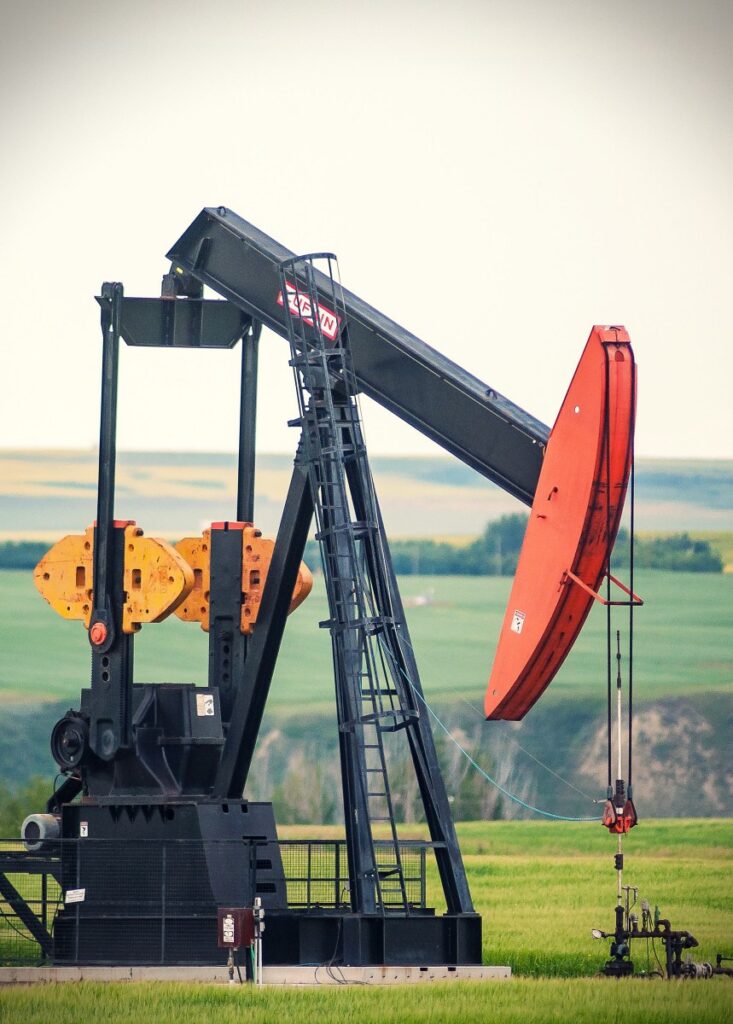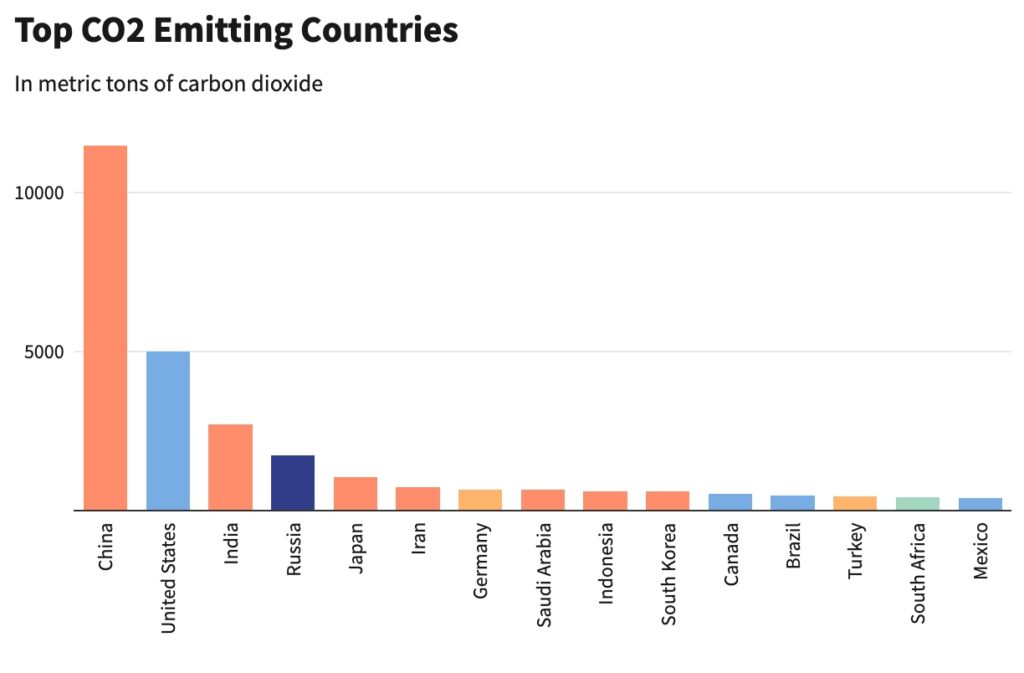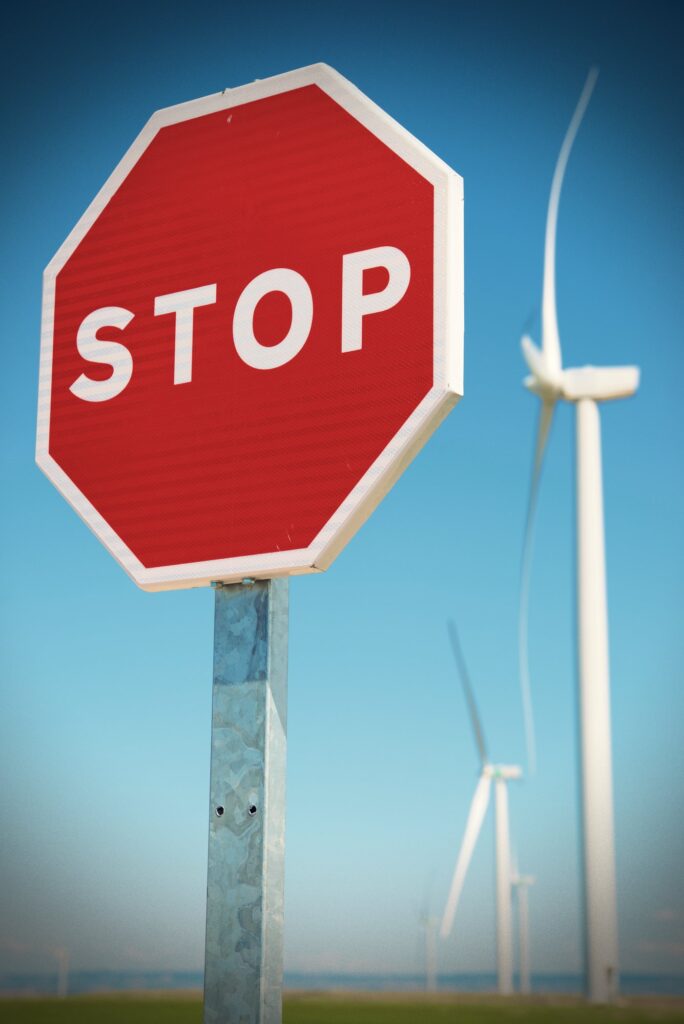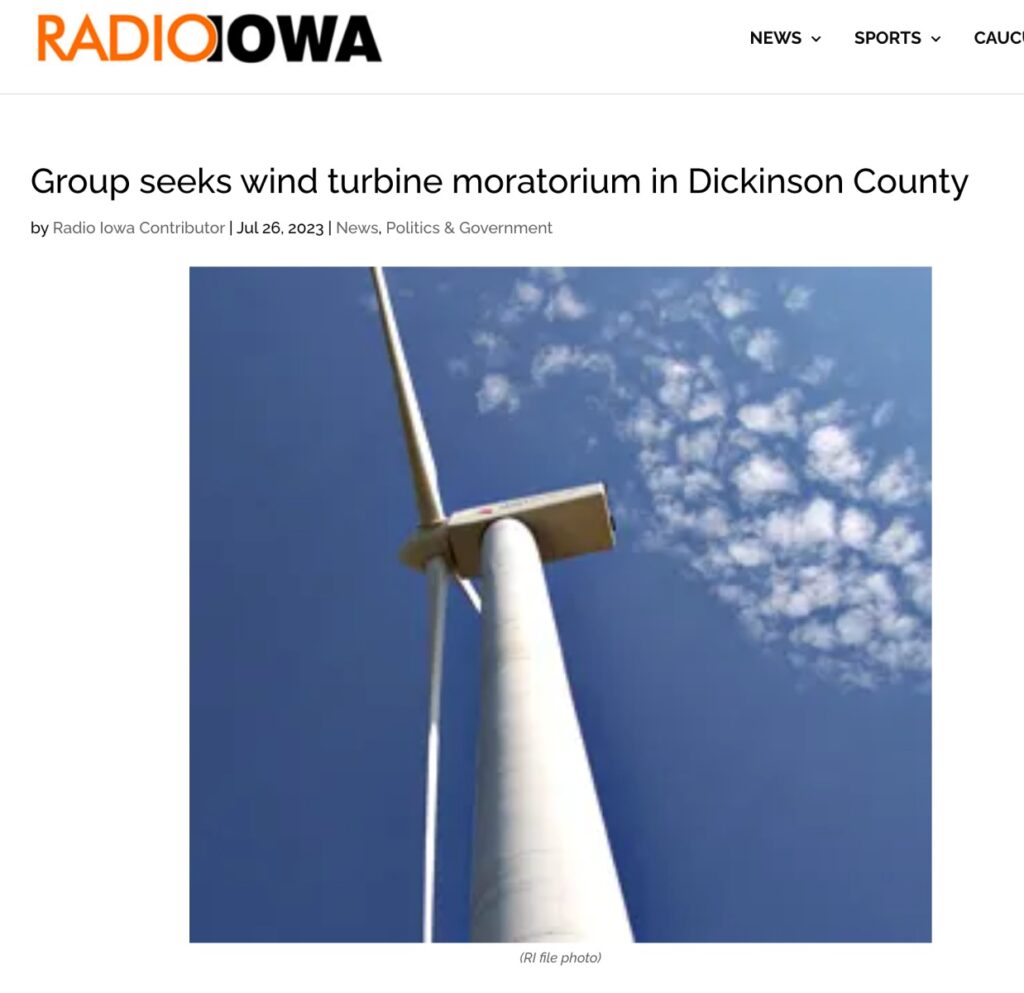There is no time to lose. The province of Alberta should immediately declare a moratorium on environmentally and economically harmful “renewable” projects such as industrial wind and solar plants.
Decades of data, research, and studies tell us everything we need to know about the long-term viability of wind and solar and their impact on the environment and society.
And it’s absolutely damning.
Start with the raping of resources from third-world countries, not to mention child labor,1 to provide the minerals needed for solar, turbines, and battery storage.2 Electric cars, for example, need six times the amount of these minerals compared to gas-powered vehicles, and onshore wind plants need nine-fold more than gas-fired plants.3 Then move on to the enormous amount of fossil fuels needed to manufacture, transport, and install them.4 Then consider that they are completely unreliable in the first place since they only generate power when the wind is blowing and the sun is shining, and still require natural gas, oil, hydro or nuclear power as backup.5 Then there is the mounting problem of the short life-span and disposal of these highly toxic turbines6 and solar panels.7 Finally, almost everywhere these renewable energy sources have been employed to replace cheap and reliable fossil fuels, energy prices have gone up, not down.8 Renewable energy hurts the poor.
The sources of our most reliable and affordable electricity, existing coal power plants, are being shut down across the country as overzealous federal and state regulatory mandates force utilities to use less reliable, and more expensive sources such as wind and solar power.
William F. Shughart II is the Research Director at the Independent Institute and the J. Fish Smith Professor in Public Choice in the Jon M. Huntsman School of Business at Utah State University, August 5, 2016; independent.org
In 2019, Ontario Premier Doug Ford finally declared a moratorium on wind projects, paying out existing contracts in order to save taxpayers from soaring energy costs.
I’m proud that we actually saved the taxpayers $790 million when we cancelled those terrible, terrible, terrible wind turbines that really, for the last 15 years, have destroyed our energy file… if we had the chance to get rid of all the wind mills we would.
Premier Doug Ford, CBC News, November 21, 2019
The alarming documentary Down Wind chronicles the absurdity of Ontario’s wind experiment that not only destroyed the landscape and drove electricity rates up, but dropped property values and created numerous health problems for nearby residents.
So, why now is Alberta going down Ontario’s failed renewable road? “Opportunity,” says Elemental Energy’s Liam Wolfe, the same energy corporation that is wringing its hands over their proposed wind project in the beautiful Northern Valley above the North Saskatchewan River near Elk Point.9 Alberta is the only province in Canada that has an open competitive market that allows businesses to compete, invest, and innovate, says Wolfe as reported by Lakeland Today.10 Add to that the $70 billion Trudeau has committed in subsidies and funds for renewable energy,11 and there is suddenly a “green rush” in Alberta.

In other words, this is really, really good for the energy companies. But it’s really, really bad for the province. In fact, it’s bad for the entire country.
Since the mid-1960s, with the exception of the COVID crisis period, Alberta has been a net contributor to Canada’s finances, sending tax money to Ottawa but receiving less, or nil back through various transfer payments for socialized programs.12 It’s the province’s development of its oil resources that has churned out wealth, not only for Alberta, but for the “have-not” provinces as well. But dismantling the carbon-based economy would be suicidal to the province and ultimately strain other parts of the country. One need only follow what’s happened in Ontario, and even worse, what’s happening in Britain and Germany.
That hasn’t stopped so-called “think tanks” like Pembina Institute on imposing their ideological pipe-dream and physically impossible goal of “net zero” carbon13 upon the province. “Alberta will need to decarbonize its grid to remain competitive with its neighbours and peer jurisdictions,” they claim.14 But note, that’s competitive in terms of reducing carbon (as if Canada is a large carbon producer in the first place — it’s not; see graph below); it has little to do with anything benefiting the citizens of this province or country.

For those who disagree, insisting this is about saving the planet by reducing “global warming,” we would point you to our article Hot Air – Behind the Wind on the growing number of scientists and climatologists who are rejecting the “climate change” apocalyptic fear-mongering and calling out its fraudulent science. That includes Nobel Prize laureate, Dr. John Clauser, who recently excoriated the ‘climate emergency’ narrative:
The popular narrative about climate change reflects a dangerous corruption of science that threatens the world’s economy and the well-being of billions of people. Misguided climate science has metastasized into massive shock-journalistic pseudoscience.
Dr. John Clauser, C02 Coalition, May 5, 2023
Greenpeace co-founder, Dr. Patrick Moore, agrees.
The alarmism is driving us through scare tactics to adopt energy policies that are going to create a huge amount of energy poverty among the poor people. It’s not good for people and it’s not good for the environment… In a warmer world we can produce more food.
Dr. Patrick Moore, Ph.D., Fox Business News with Stewart Varney, January 2011; Forbes.com
And that’s likely the other, unspoken reason, that Alberta opened its door to such destructive energy policies: political correctness.
Climate change has become a powerful political force for many reasons. First, it is universal; we are told everything on Earth is threatened. Second, it invokes the two most powerful human motivators: fear and guilt… Third, there is a powerful convergence of interests among key elites that support the climate “narrative.” Environmentalists spread fear and raise donations; politicians appear to be saving the Earth from doom; the media has a field day with sensation and conflict; science institutions raise billions in grants, create whole new departments, and stoke a feeding frenzy of scary scenarios; business wants to look green, and get huge public subsidies for projects that would otherwise be economic losers, such as wind farms and solar arrays. Fourth, the Left sees climate change as a perfect means to redistribute wealth from industrial countries to the developing world and the UN bureaucracy.
Dr. Patrick Moore, Ph.D, co-founder of Greenpeace; “Why I am a Climate Change Skeptic”, March 20th, 2015, Heartland Institute
It was under former Premier Rachel Notley that this radical green ideology now sweeping the planet took a foothold in the province — and why many breathed a sigh of relief when she was defeated in 2023. One of Notley’s goals was to sacrifice to the green gods Alberta’s beautiful rural landscape, transforming it into a veritable junkyard of wind turbines and solar panels for generations to come.15
But there’s new hope that common sense will take hold again with the Spring election of Danielle Smith, who clearly signalled that she opposes Prime Minister Trudeau’s push to cut “climate-warming” carbon emissions 40-45% by 2030 and reach “net zero” emissions in the country by 2050.
As Premier, I cannot under any circumstances allow these contemplated federal policies to be inflicted upon Albertans.
Premier Danielle Smith, acceptance speech, May 29, 2023; reuters.com

These caps, said Smith, will not only massively increase energy bills but “will result in tens of thousands of jobs lost, tens of billions in lost investment, damage our province’s fiscal position and bring economic hardship to Albertans.”16
We agree. Hence, it is time to call for a moratorium on these so-called “green” projects. Are hydro or nuclear better options? Some environmentalists are saying so. 17
But massive wind and solar arrays harm the environment. They harm the economy. They harm soil.18 They harm humans.19 They harm wildlife.20 It won’t be popular with Trudeau; it won’t be popular with the energy corporations who stand to make billions from subsidies and selling carbon credits; it won’t be popular with the younger generation who’ve been duped by Marxist tropes and state propaganda; and it won’t be popular with Notley’s supporters… but it’s the moral thing to do.
Premier Smith will be on the right side of history. But time is of the essence…
Environmentalist Michael Shellenberger

- cf. theguardian.com and watch here[↩]
- cf. here, here, and here[↩]
- climate.mit.edu[↩]
- cf. here[↩]
- cf. here, here, and here[↩]
- cf. here, here, and here[↩]
- cf. wired.com[↩]
- cf. here, here, here, and here[↩]
- cf. here[↩]
- Jun 20, 2023; lakelandtoday.ca[↩]
- Finance Minister Chrystia Freeland’s third budget as finance minister offers $16.4 billion in tax credits for clean tech manufacturing, clean electricity and hydrogen over the next five years, adding to the $6.7 billion in supports for clean tech investment announced last fall. Freeland also has agreed to add $500 million to the $4.1 billion in support announced last year for carbon capture, utilization and storage. Beyond those subsidies, the government has committed billions toward a handful of potentially lucrative funds, including $15 billion for the Canada Growth Fund, $8 billion for a “net zero accelerator” and $20 billion through the Canada Infrastructure Bank. (source: cbc.ca) [↩]
- cf. nationalpost.com[↩]
- cf. here[↩]
- cf. pembina.org/pub/zeroing-in[↩]
- cf. June 7, 2021; nationalobserver.com[↩]
- globalnews.ca[↩]
- Michael Shellenberger; youtube.com[↩]
- cf. here and here[↩]
- cf. here, here, here, and here[↩]
- cf. here, here, and here[↩]
Mark Mallett is a former award-winning reporter with CTV Edmonton and an independent researcher and author. His family homesteaded between Vermilion and Cold Lake, Alberta, and now resides in the Lakeland region. Mark is Editor in Chief of Wind Concerns.


